By Eric T. Baker
When you sit down to start a game of Hearts of Iron III for the PC from Paradox Interactive, you can choose any year from 1936 to 1948 and play one of 150 different countries. This is a strategy game with a capitol S that lets you model the WWII era from almost anywhere that was important at that time. Of course, most players will want to play Germany or Japan or America since one of these powers has the best chance of world domination, but the game can be played from the point of view of any of the world’s smaller powers.
The heart of the game is the world map. It is broken up into 14,000 land and sea provinces. That is obviously far too much for one player to track individually, so the game employs a system of color overlays to help you see where to focus. For instance, on the intelligence overlay, provinces take on a color based on how much your spies are telling you about it. Clicks on the diplomatic, production, materials, units, and other overlays tell the story of the world as it is that turn.
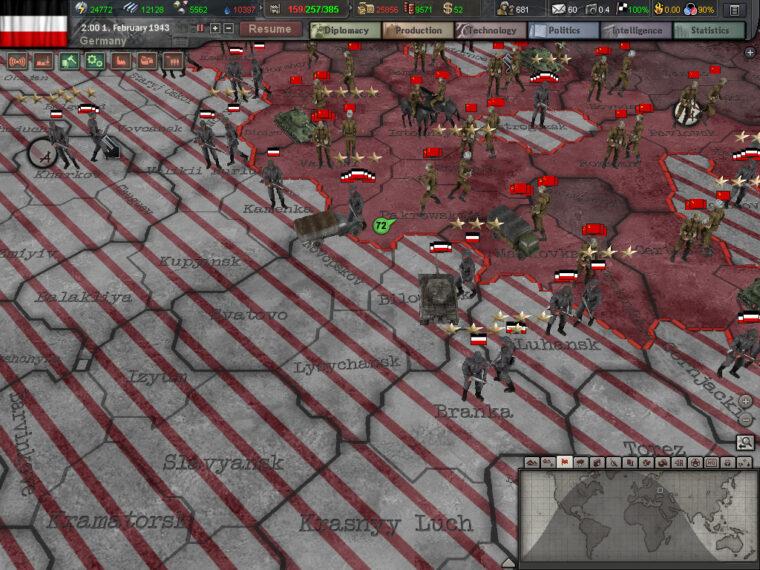
While the map with its colored overlays is the key to understanding the world, the game’s AI is the key to managing the many variables. For instance, the science system lets you explore both practical science (upgrades for units that can be delivered in the short term) and theoretical science (broader upgrades that will take much longer to appear) in a number of different directions. You can micro-manage these tracks turn after turn, or you can turn some or all of them over to the AI to advance.
Like the science system, you can also manage or delegate with the diplomacy and combat screens. In the unlikely event that you want to open a two-front war, you can assign objectives, units, and combat style to AI commanders on one front and leave them to it while you are much more hands on in fighting the other front. HoI3 is a big game for a player with a lot of time to spend really building up a country. It is a game for players who aspire to being Churchill more than they dream of being Montgomery, but it is also a game where the player can be both.
In the context of a global conflict, 10 square miles doesn’t seem like that big a space, but in the case of a battlefield on which a video game is played, 10 square miles is huge. Ten square miles is the area on which you command your troops in Officers: World War II by 3A games for the PC. It is a real-time strategy game, and most RTS games are played on a much smaller area with fewer units of smaller sizes. Officers can have as many as 1,500 units involved in a battle.
The setting of Officers is Europe after the D- Day invasion. In the single-player game, you take the role of a United States commander and fight your way through a series of “historical” scenarios. In the multiplayer game, which allows up to eight players at once, the players can also play the German and Russian armies. Unlike traditional RTS play, there is no need to build factories in Officers, but players do need to capture strategic points to unlock reinforcements. Conveniently, the game is won by controlling all the strategic points, so players have a unity of purpose in directing their units.
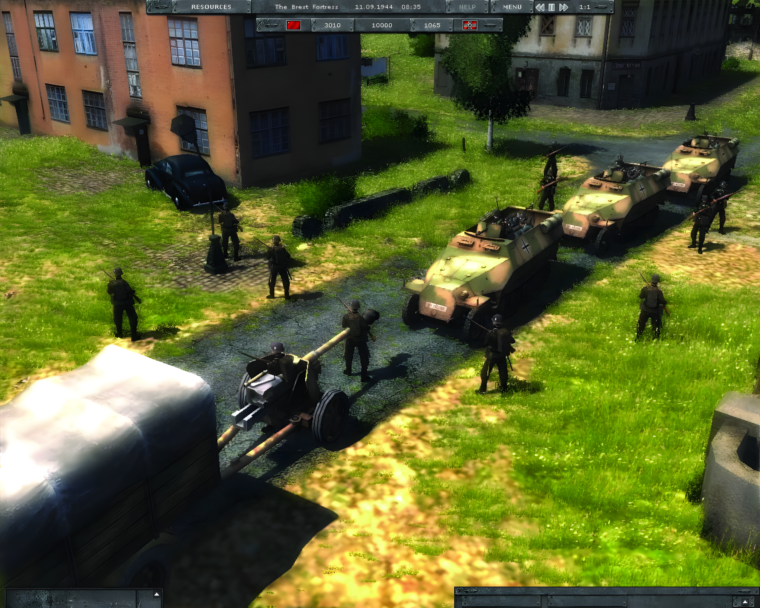
There are 70 different unit types in Officers, but unlike many RTS games, there is no emphasis on unlocking the different types. Players are pretty much given all the game has to fight with right from the start, including air strikes and artillery support. This makes for exciting battles right out of the box, but it hurts the game as the campaign progresses because there is nothing new to add to the battles. The tactics the players use in the first couple of battles are the ones they will still be using in the last couple.
What will convince you to play Officers instead of one of the other WWII-themed RTS games is the setting (post D-Day i sa rich time to be in command of the U.S. units) and the size of the battles. Players who want the excitement of controlling so many units over such a large area will enjoy Officers. A large battlefield means longer games, though, and it means games that are harder to end because the Nazi remnants have more niches to hide in. For players with the time, and particularly for those who have a friend who will play them in this game online, Officers is a good choice.
Speaking of online … Electronic Arts has brought its signature first-person online combat game, Battlefield, to the Xbox Live Arcade and the Playstation Network with Battlefield 1943. The game is essentially Battlefield 1942 simplified for playing on the console, but it can’t be called a port because the original game engine has been replaced by the Frostbite engine used in last year’s Battlefield Bad Company game. So it is the resized maps and tweaked textures of 1942 with the engine of BC, all of it optimized for console play and packed into a 600 meg download.
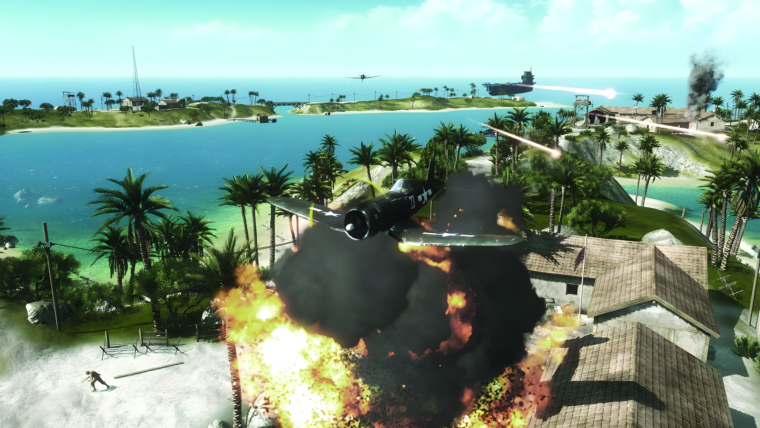
Like the other Battlefield games, 1943 is not an attempt to accurately model WWII combat. This is a shooter that strives to make player vs. player combat fun while everyone wears WWII outfits and shoots guns that have a WWII look. The game pits U.S. Marines against the Japanese Imperial Army on four different battlefields based on Wake Island, Iwo Jima, Guadalcanal, and Coral Sea. Players spawn as one of three classes: Infantry, Rifleman, and Scout. There can be up to 24 players on a map and the players can group themselves into four-man squads. Players then battle until one side is out of respawns, a process that can be accelerated by holding various strategic points on the map.
An example of how gameplay trumps the need for reality in the game is that the Scout Class’s primary small arm is a sniper rifle. The designers, however, didn’t have the textures for the Arisaka rifle on hand, so the Japanese use a German rifle. Another is that a player’s health regenerates if he is not taking damage, and that infantrymen can heal damage to vehicles by using their wrench tool on them. On the other hand, the “one shot you’re done” reality would not have been much fun in this sort of game, nor would forcing the players to learn realistic controls for the vehicles, although the fighter planes, in particular, do have a learning curve.
What made the Battlefield franchise stand out from other online shooters and what has been retained in 1943 is the way characters respawn after death. Characters aren’t just automatically assigned to spawn points by the game. Players can choose to spawn at any strategic point their side holds, or they can spawn next to any of their squad mates, even in a vehicle if there is an open seat. This system means that players can stay in the battle where they are needed and actually makes dying a part of the strategy of the game.
While there are only four maps in this downloadable version of the franchise, and one of those has to be unlocked by making a lot of kills on the other three, the play of 1943 doesn’t get repetitive because so much of the terrain is destructible. A village that was a door-to-door bloodbath in one game may be leveled by an air strike in the next, turned into a field where jeeps and fighter craft duel. So while not a simulation, the low price, frantic pace, and drop in, drop out gameplay make Battlefield 1943 an excellent casual game for any WWII fan.
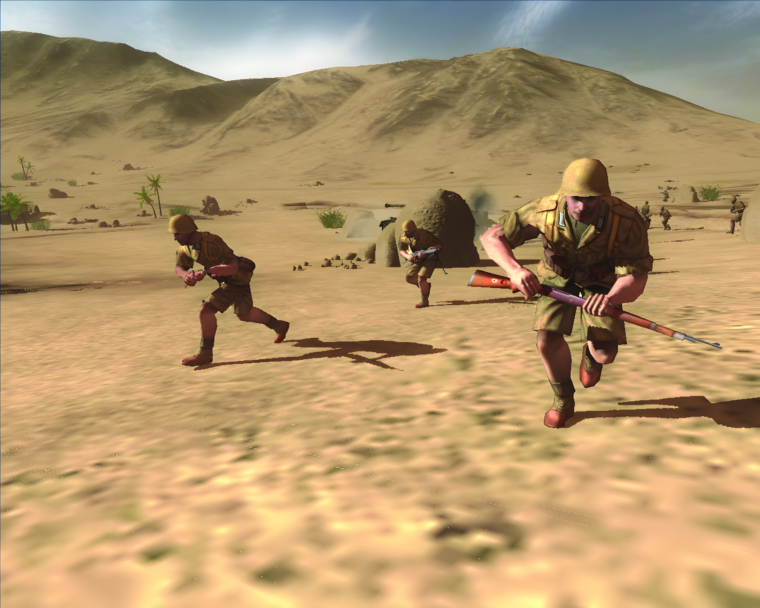
If you are looking for realism and simulation in your video wargames you should check out Theater of War 2: Africa 1943 for the PC from Battlefront games. This is a tactical-level game modeling combat in the closing days of the North African campaign on the level of individual vehicles and soldiers. A typical battle will see you controlling about 50 soldiers and vehicles. Each will have their own stats and skills. Some battles will depend on sorting through the available soldiers to find the best driver and gunner to man your best tank.
A world away from the damage physics of Battlefield, ToW2 crunches the numbers on each shell and bullet fired in the game. Tanks are modeled with their different, historically accurate armors so that the effect of shells against them takes into account not only the type of shell, but also where and at what angle it hits the tank. The tank and its crew’s effectiveness is adjusted as appropriate. This level of detail extends to other units as well. Even individual soldiers can suffer limb wounds that partially incapacitate them without removing them completely from the battle.
Some games that do this sort of number crunching don’t have the graphics to show it, but ToW2 does. Gun crew animations, tank crew bailouts, individual soldiers running and firing and dying, all these things are animated in detail. That’s the good news. The bad news is that the animations are not as optimized as they might have been in a higher budget game. Even with a good computer and a graphics card, the action will go slide show as soon as the rounds start flying at the highest detail levels.
There are three campaigns in ToW2: British, German, and American. Each has linked scenarios where surviving troops from one battle can be leveled and used in the next. It takes replays just to succeed in the battles, much less to win them with enough troops to make the leveling worthwhile. The AI makes up for its lack of deep thinking with some very accurate gunnery. Still, this is a game for people who want to see real warfare modeled, and who want to spend an hour or a two at a time leading their forces to victory by commanding one unit at time.
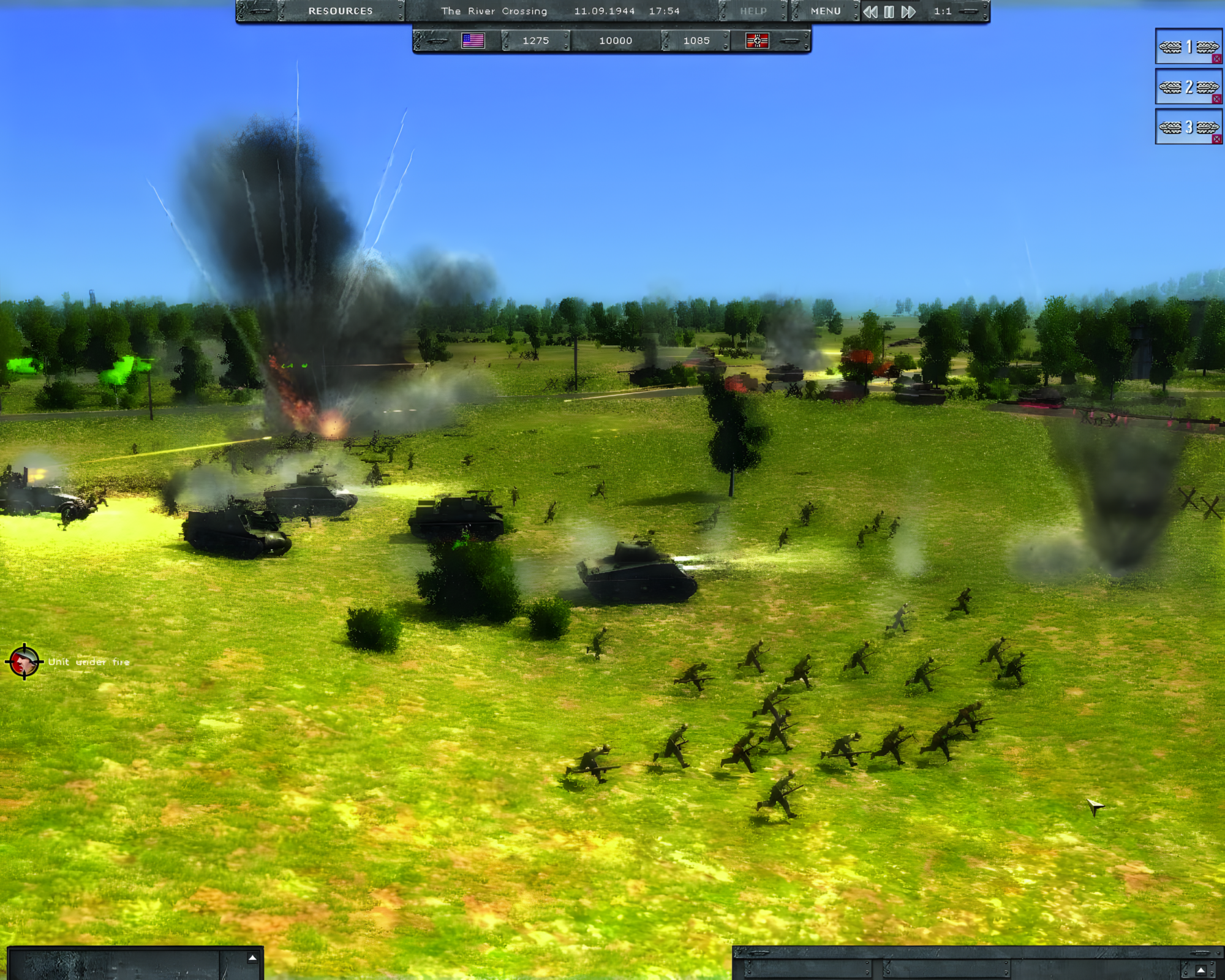
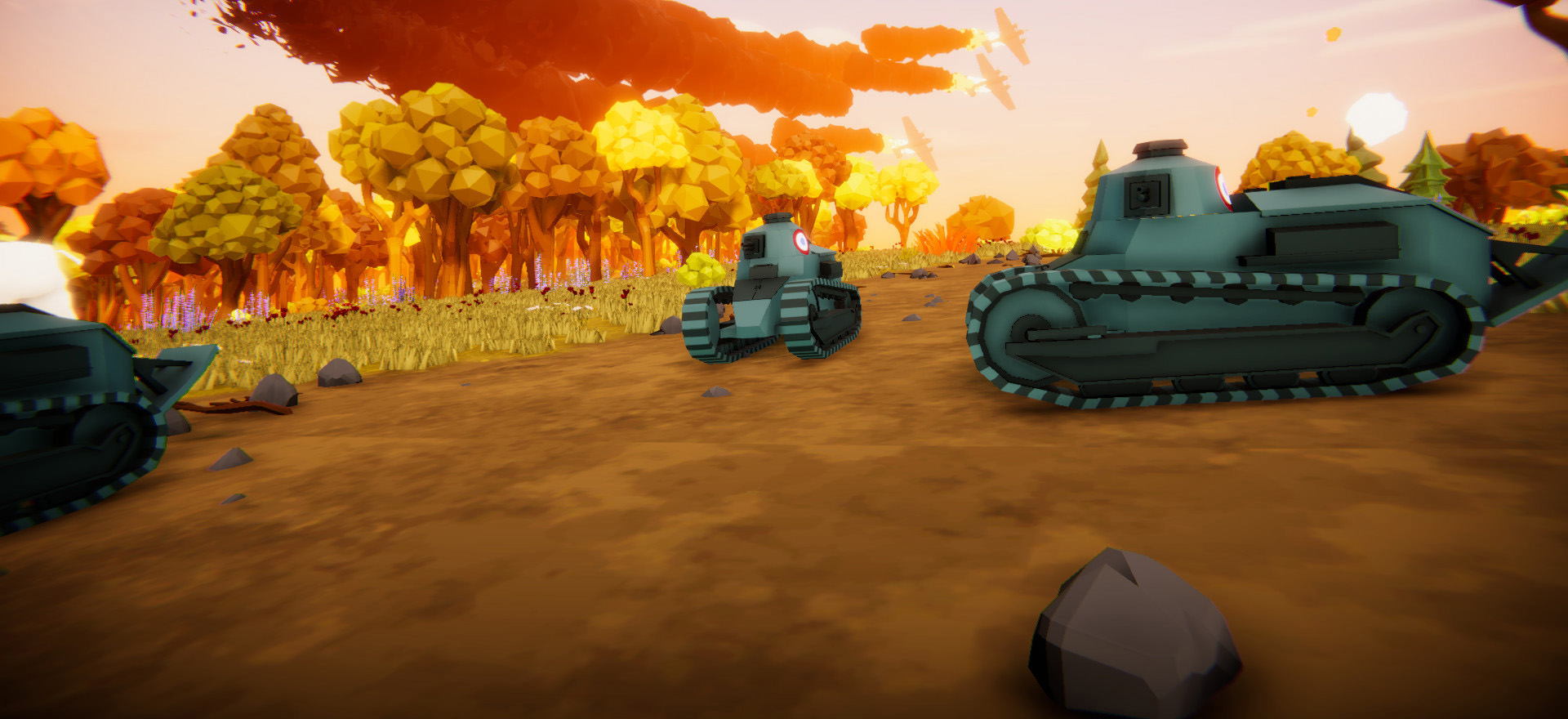
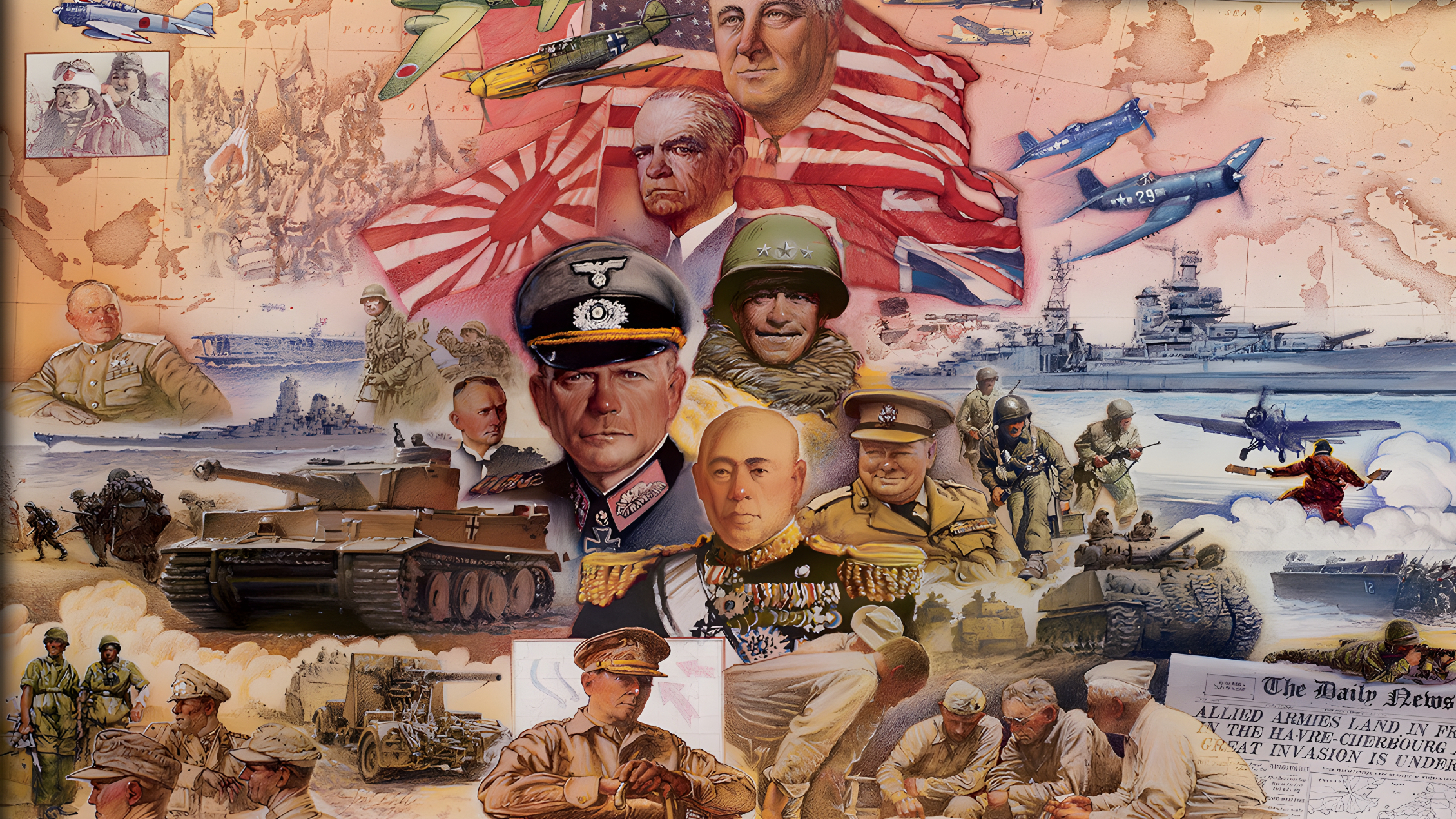
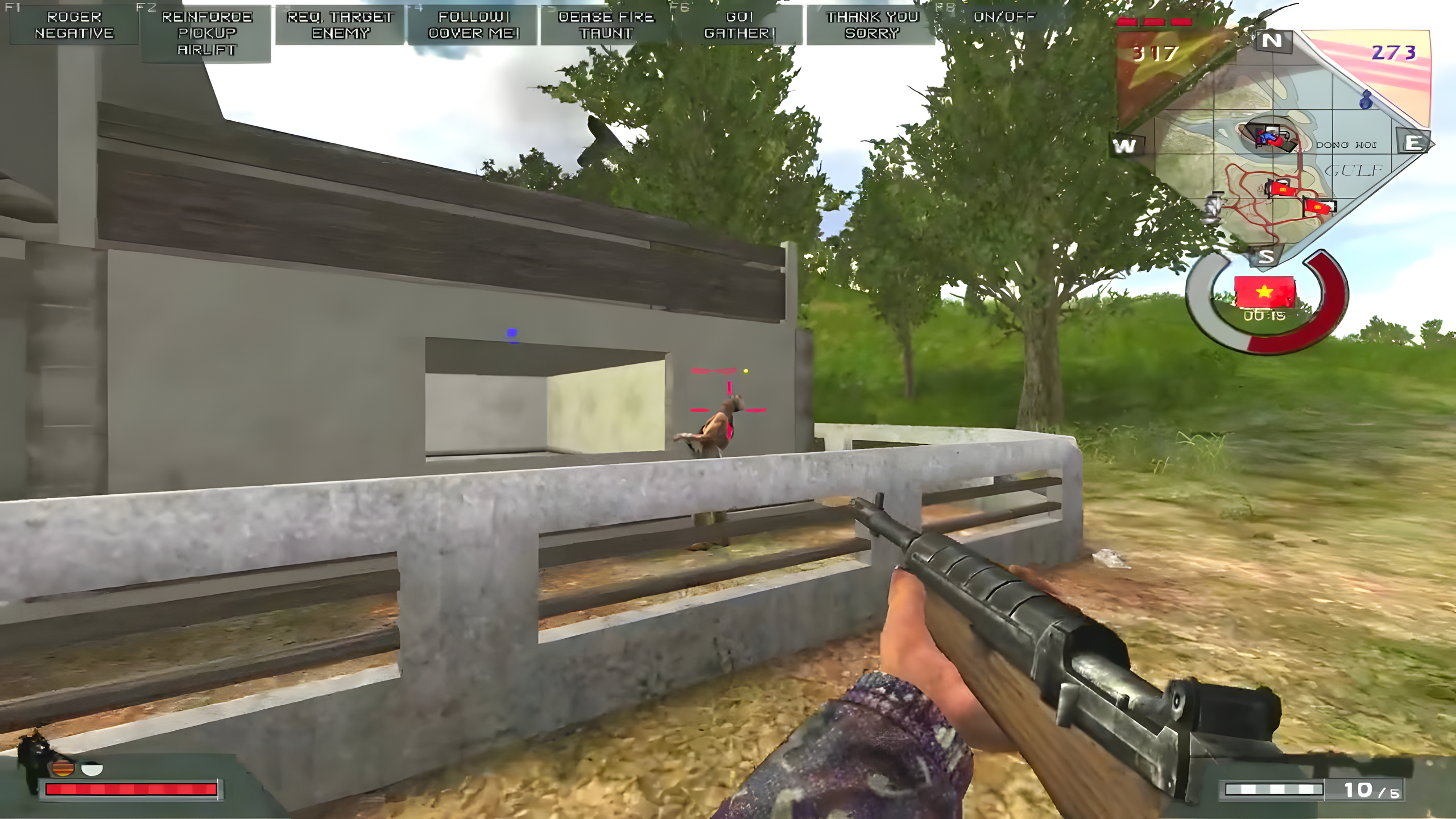
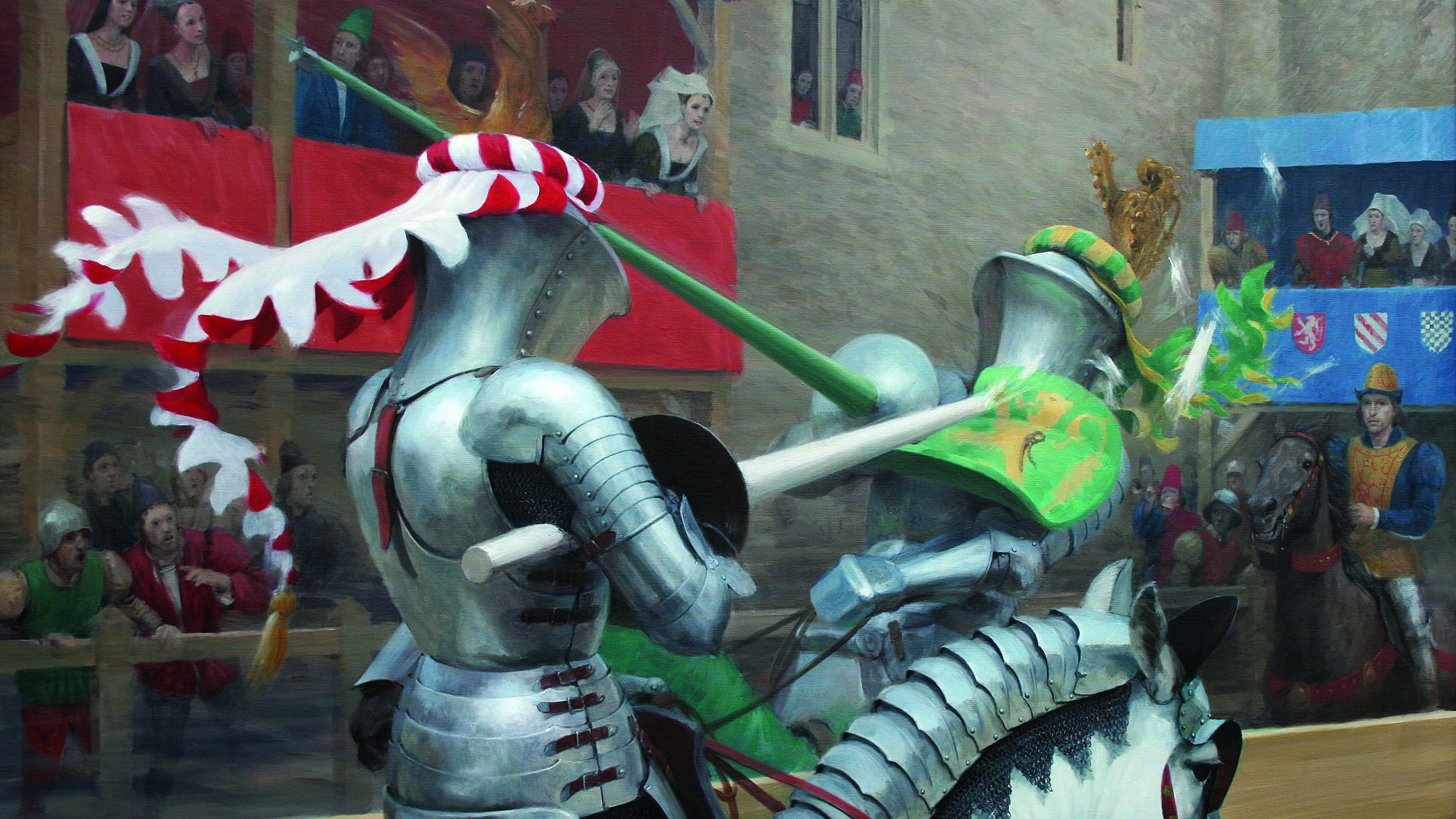
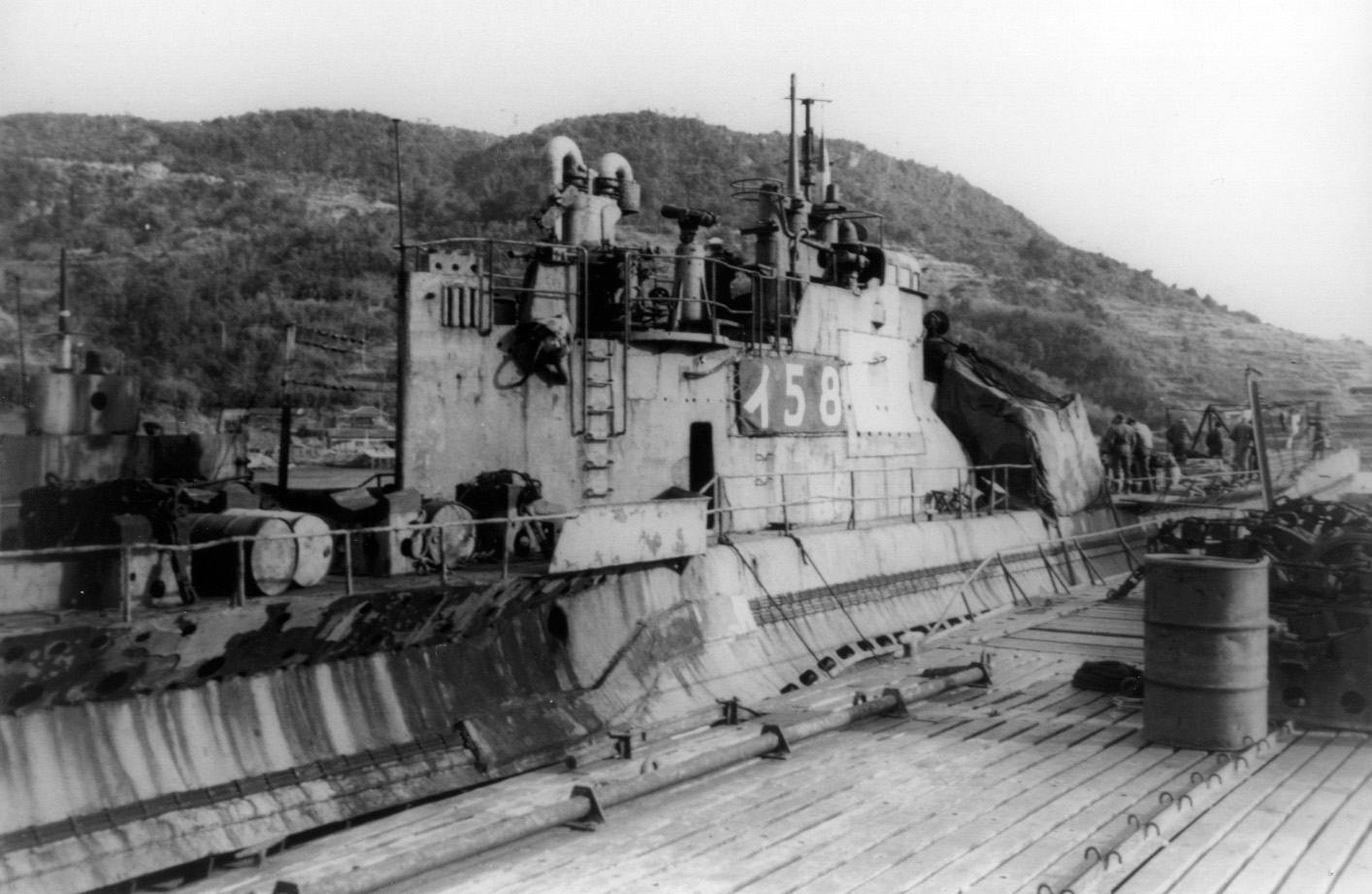
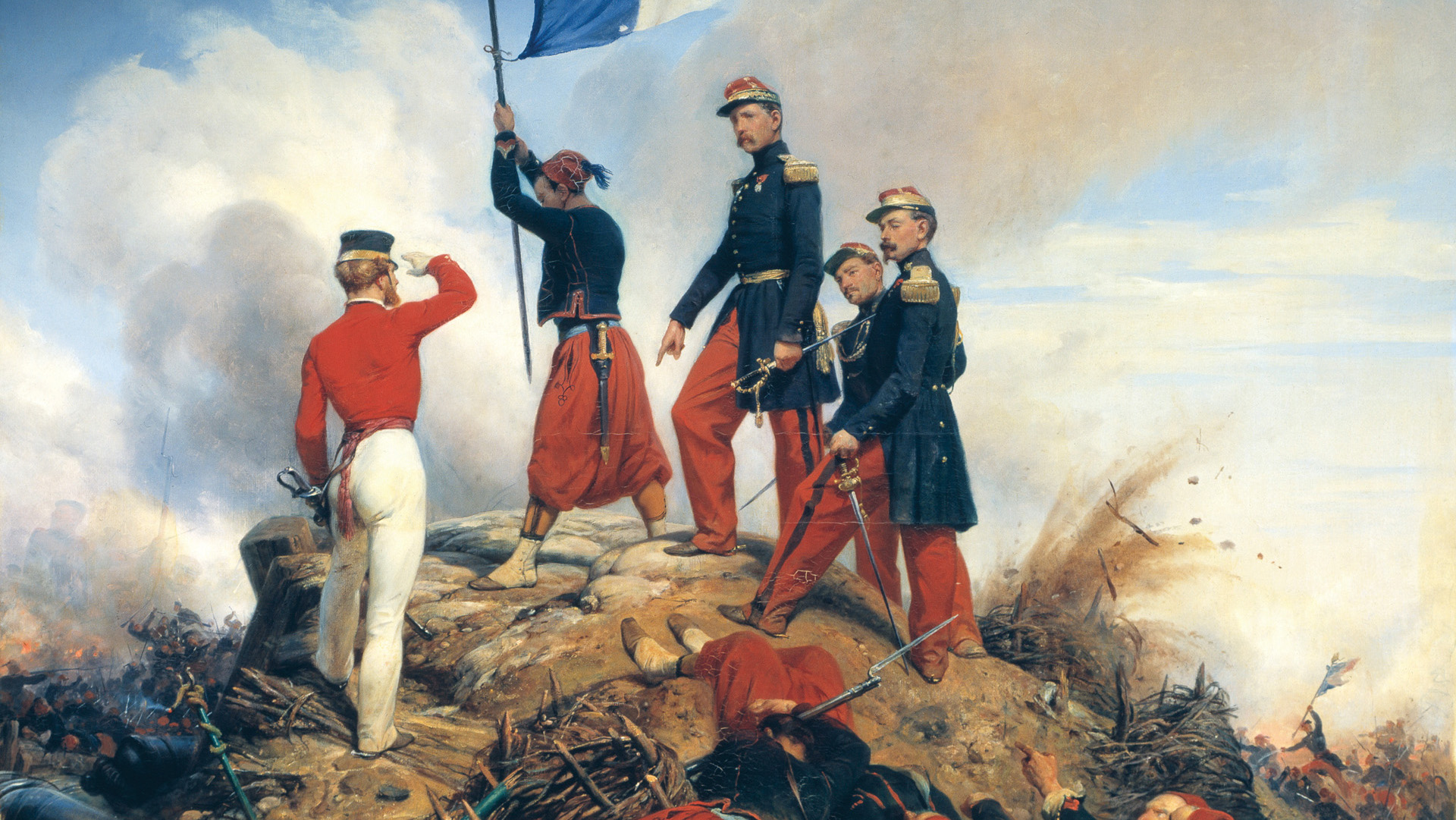
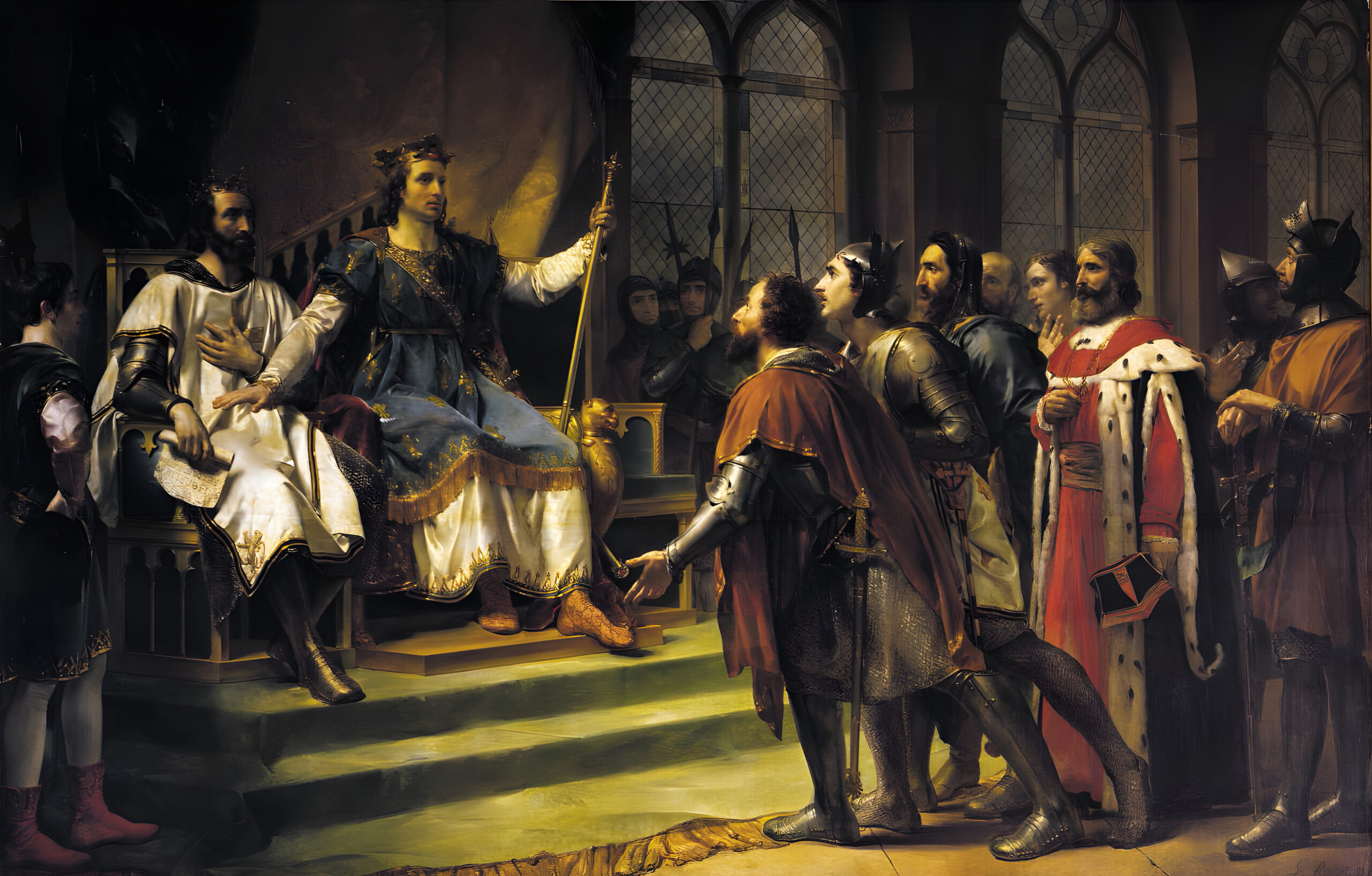
Join The Conversation
Comments
View All Comments